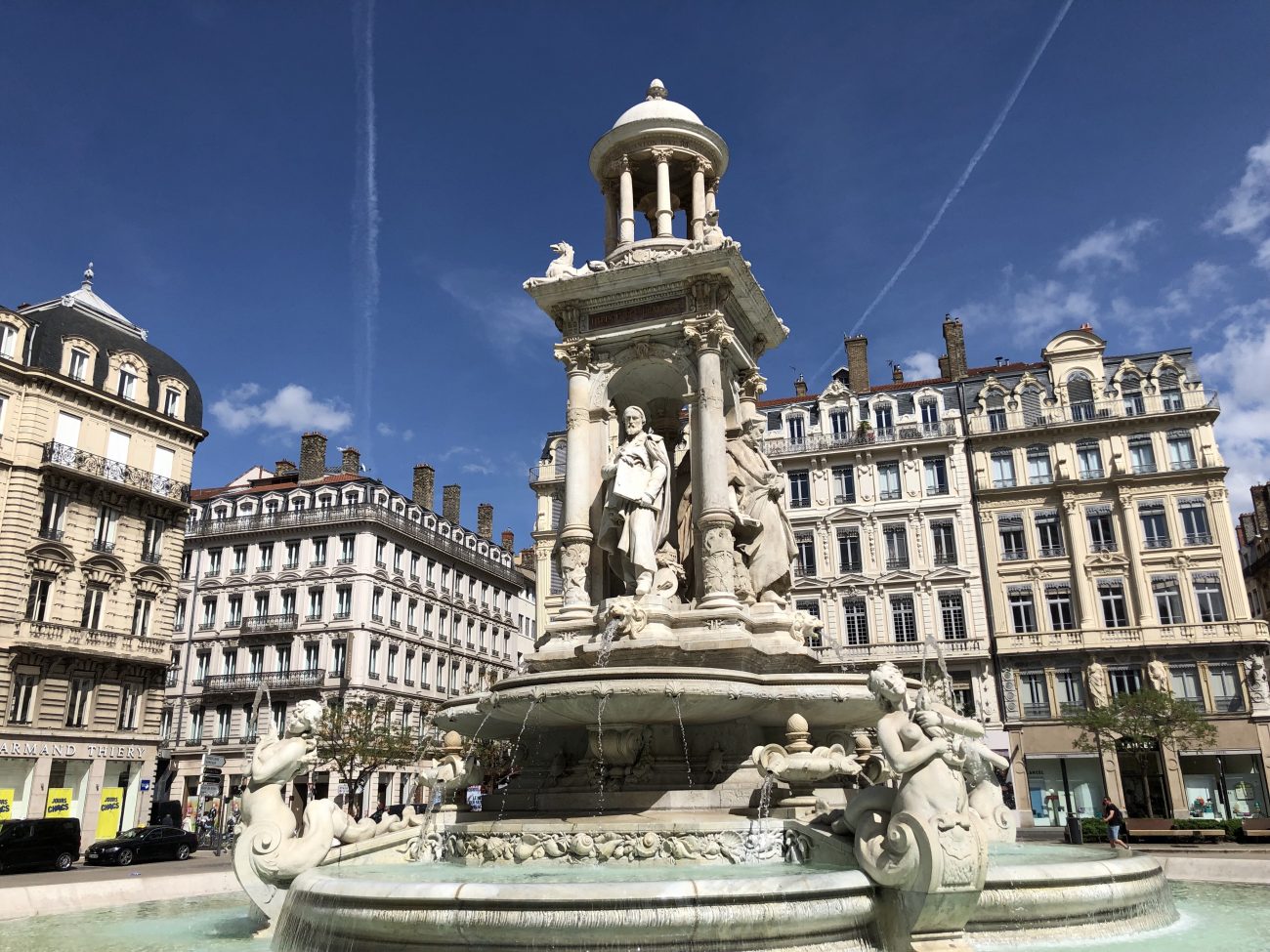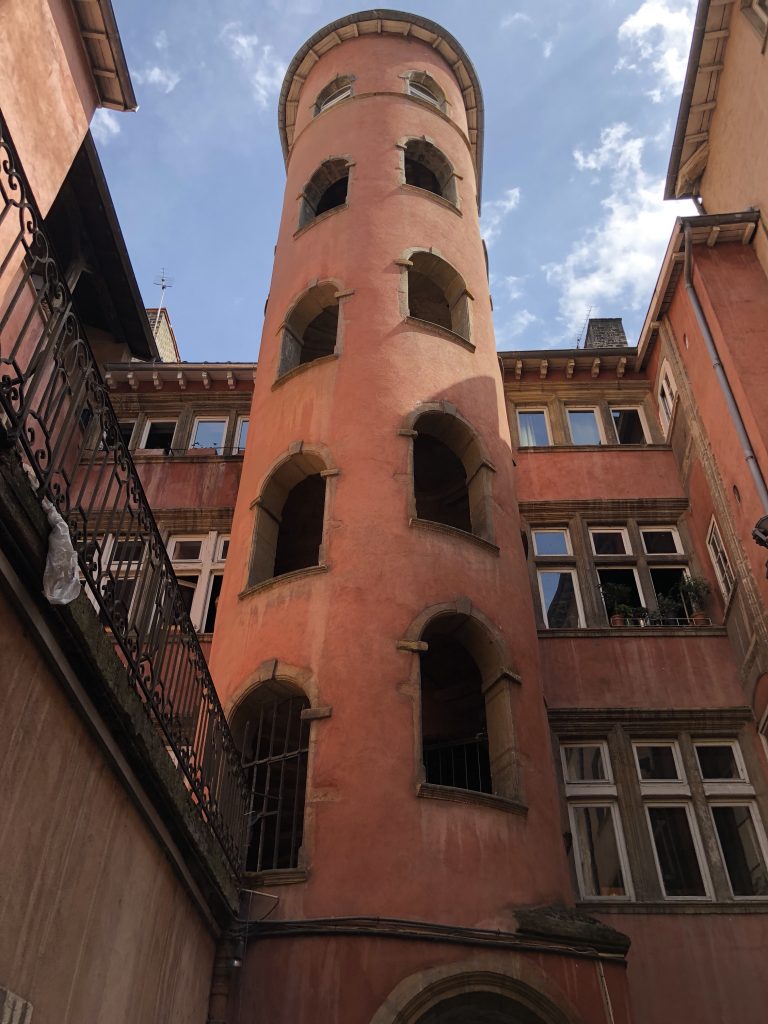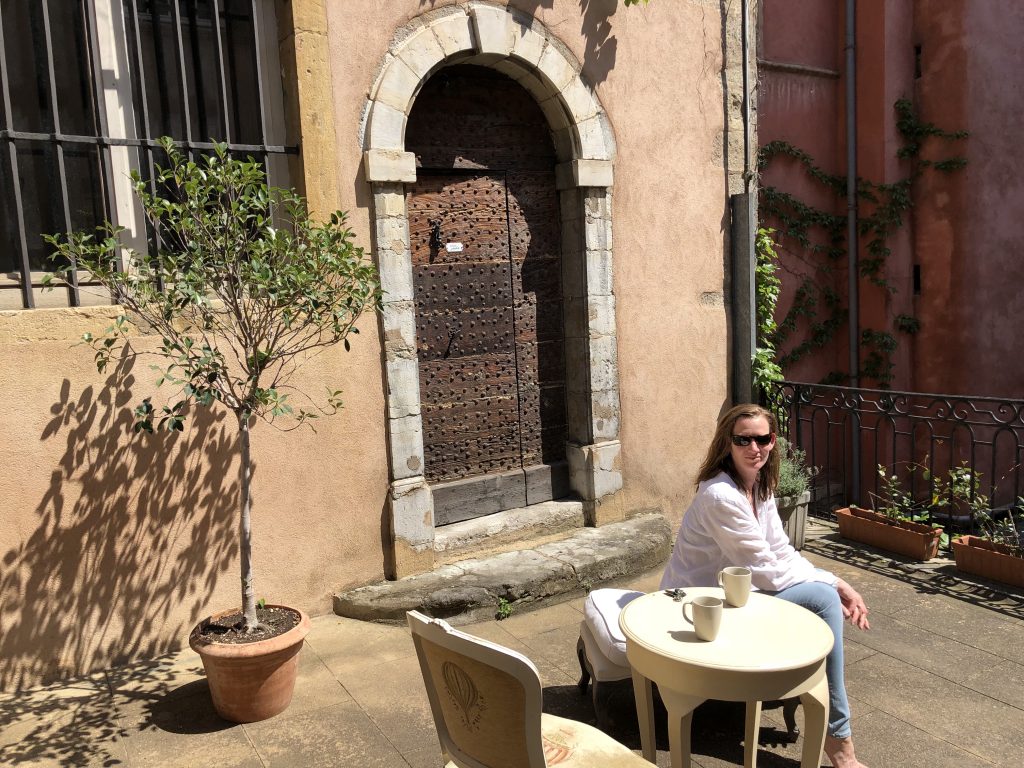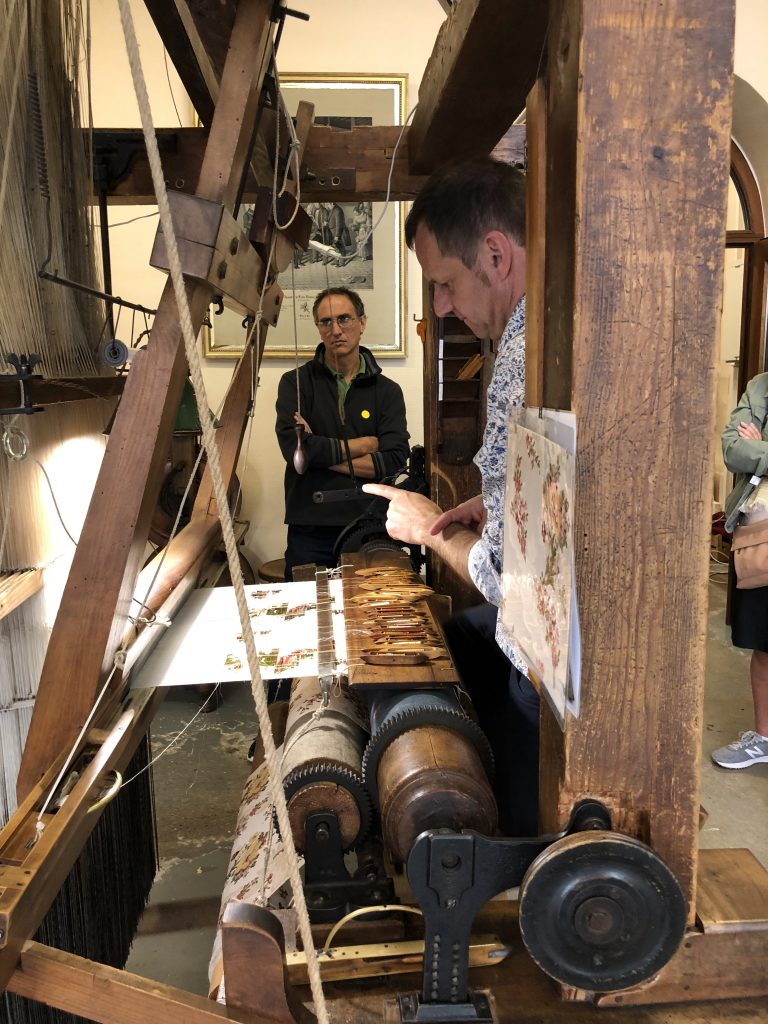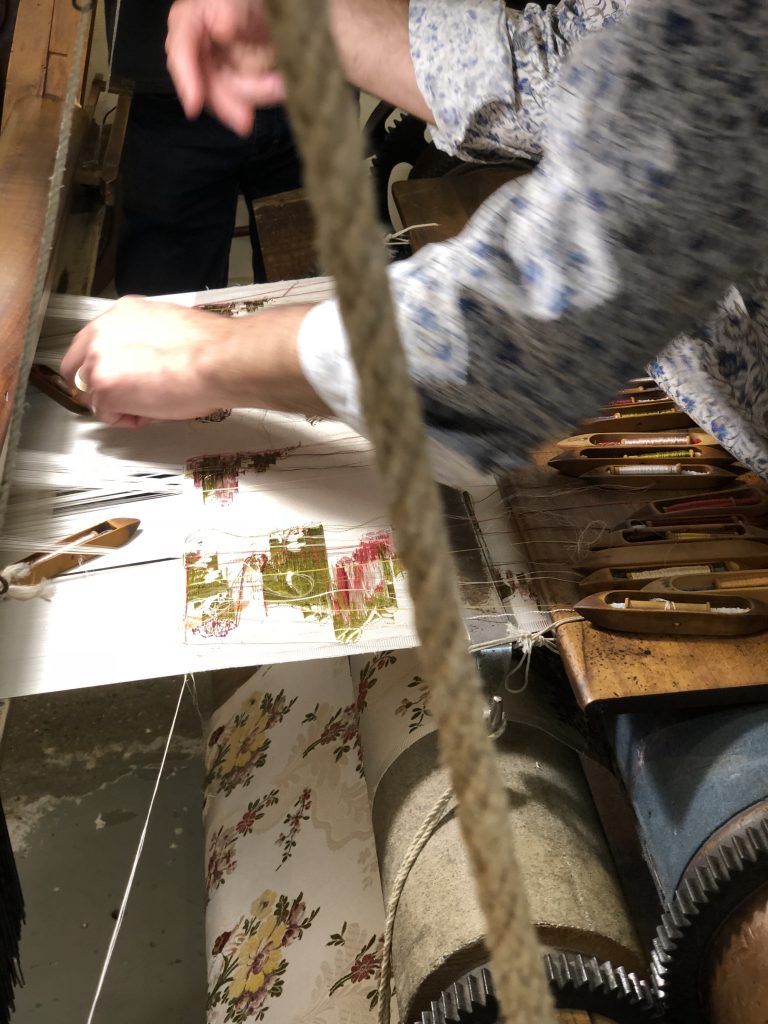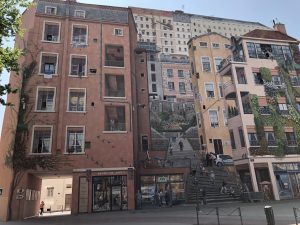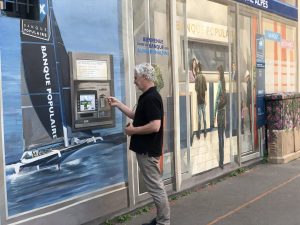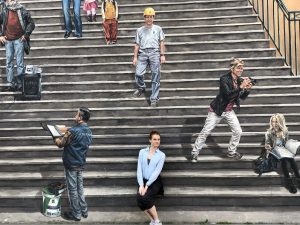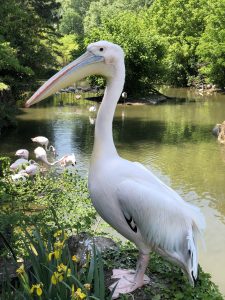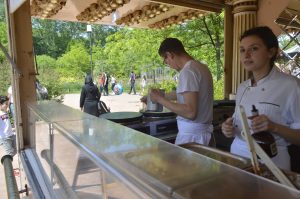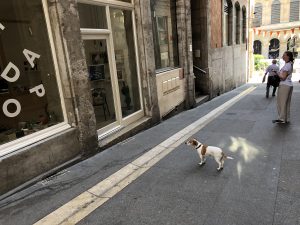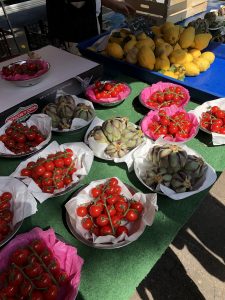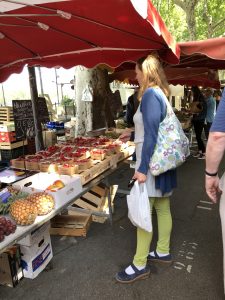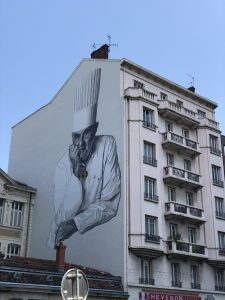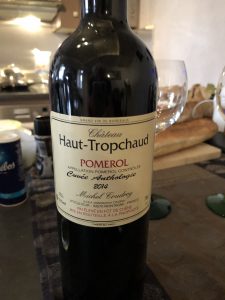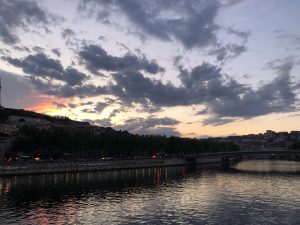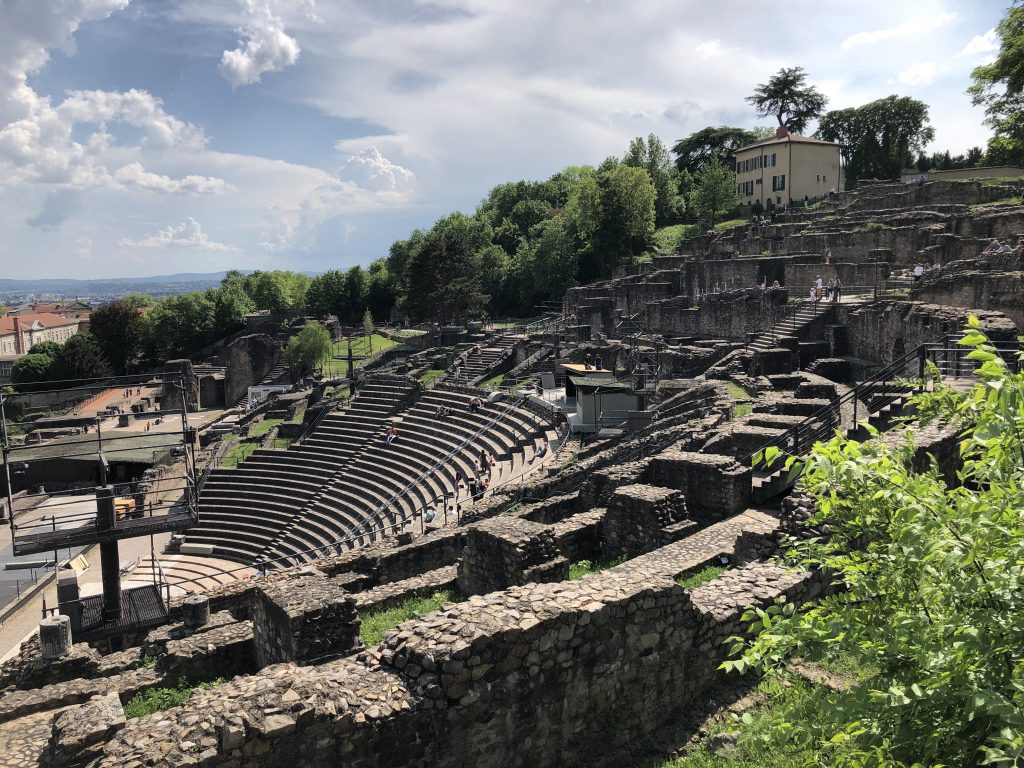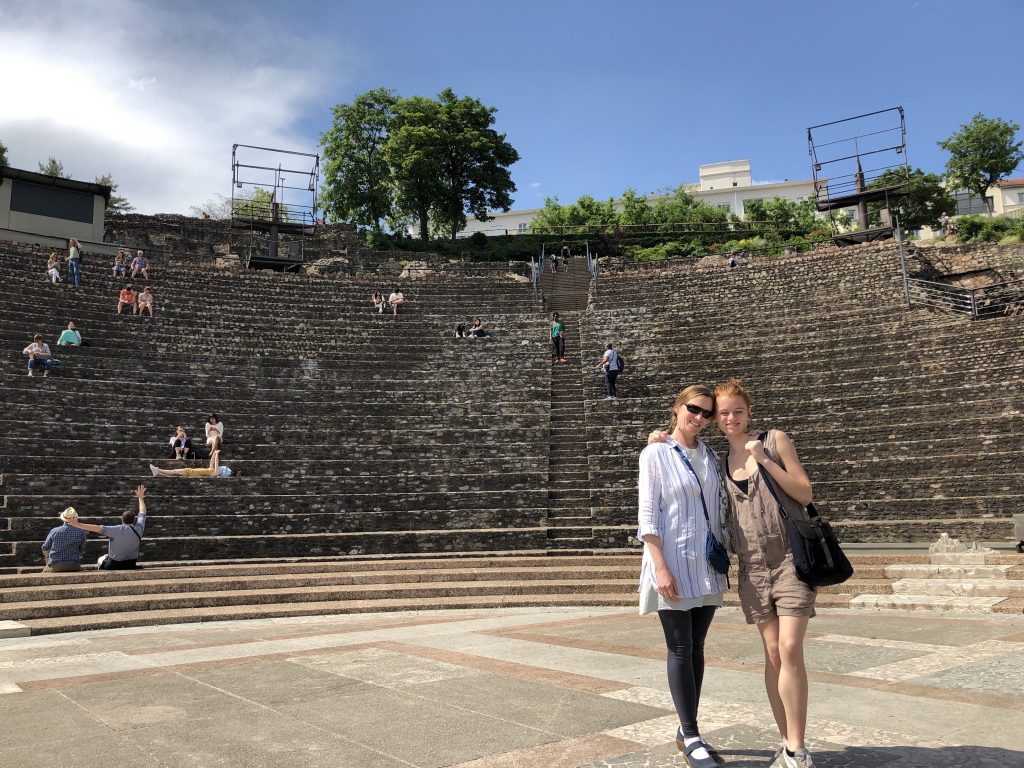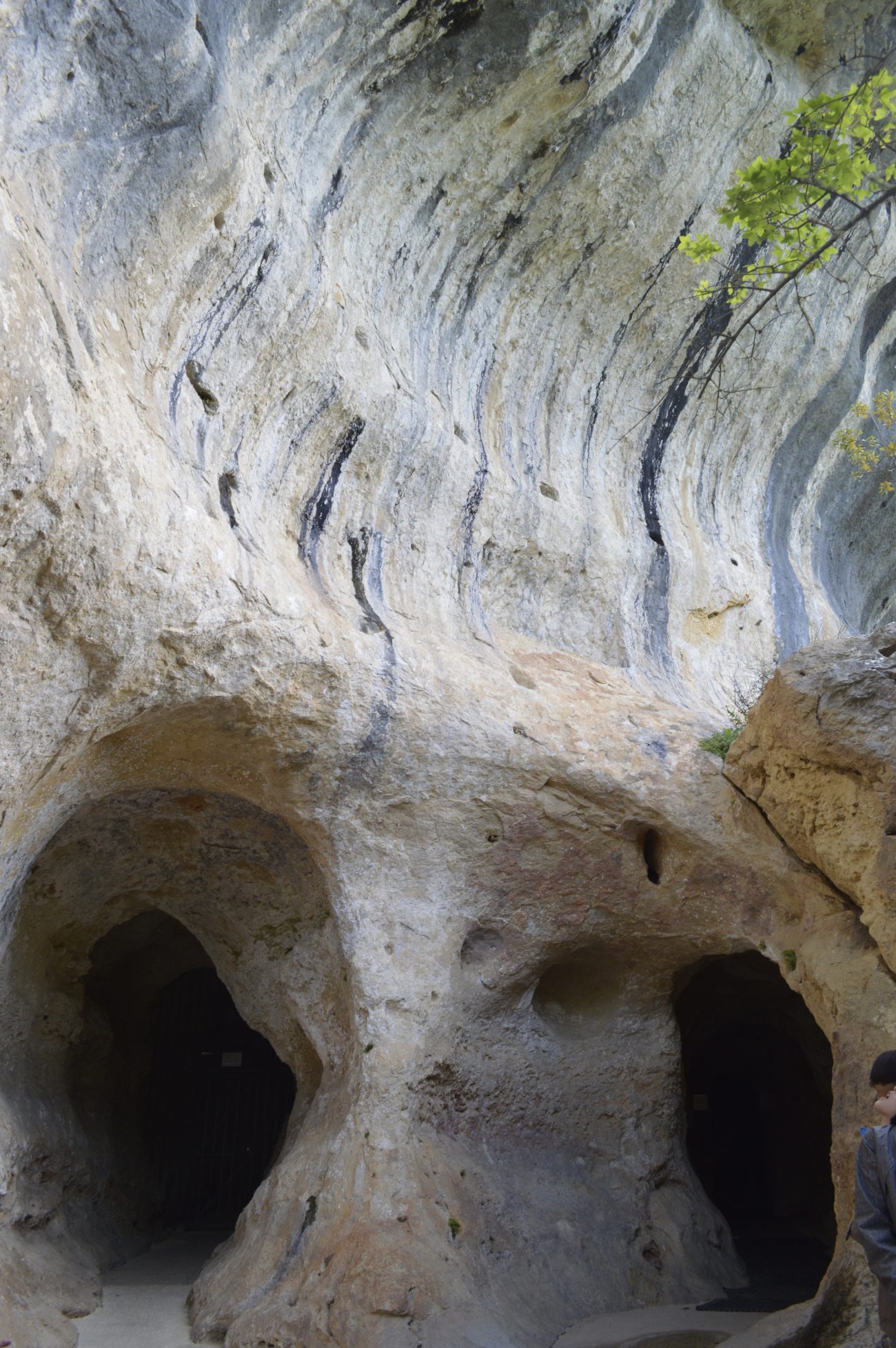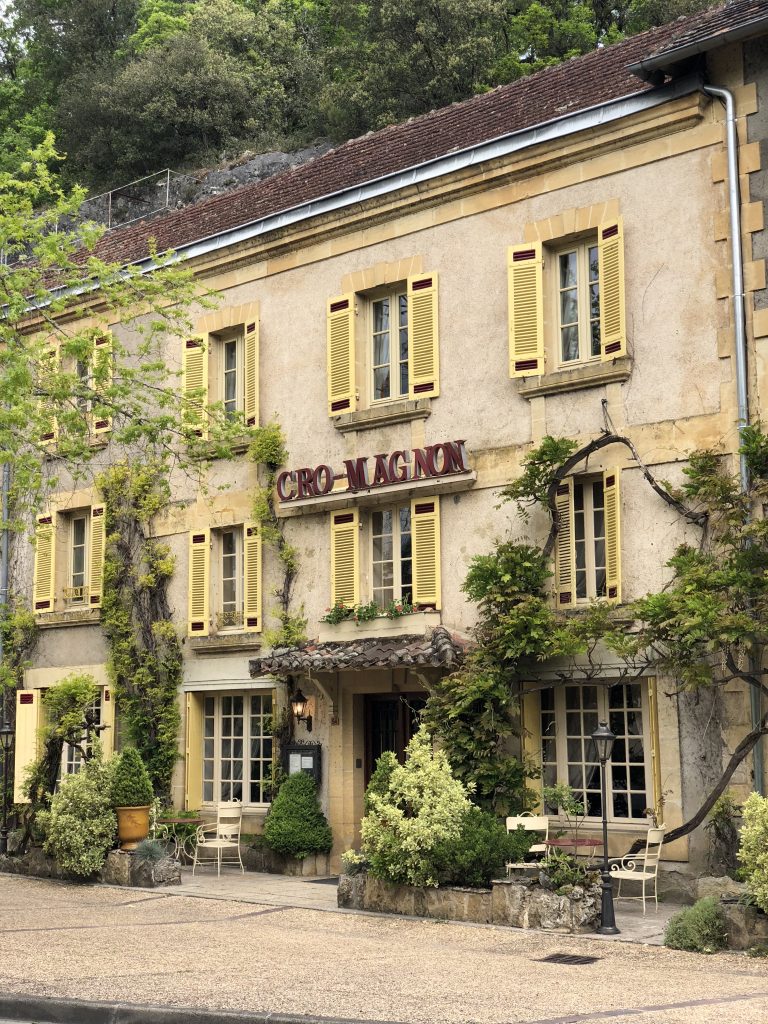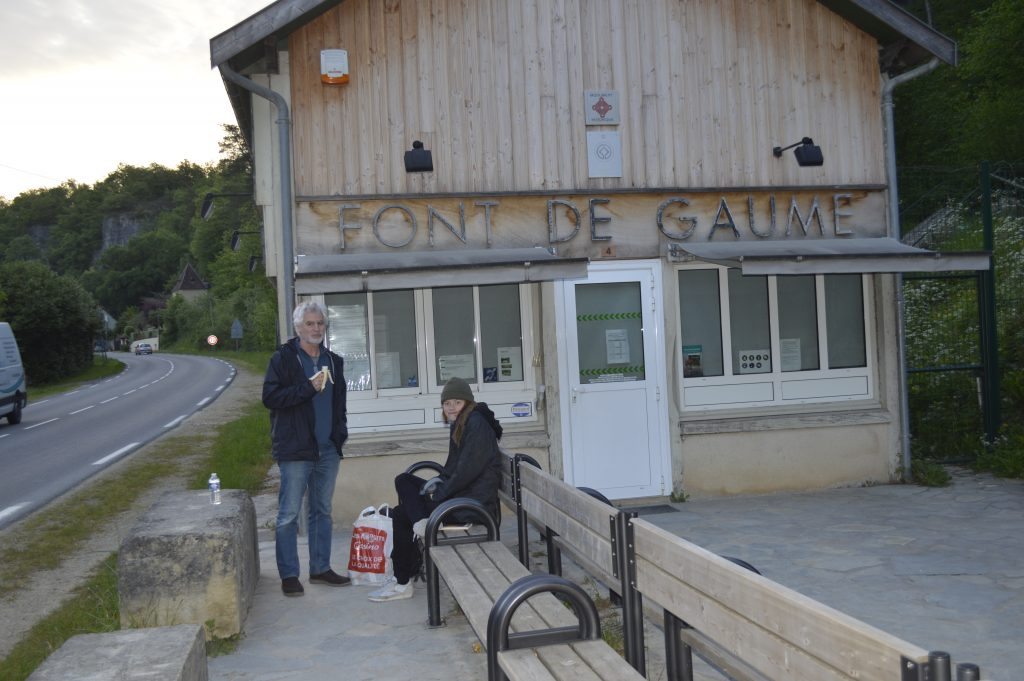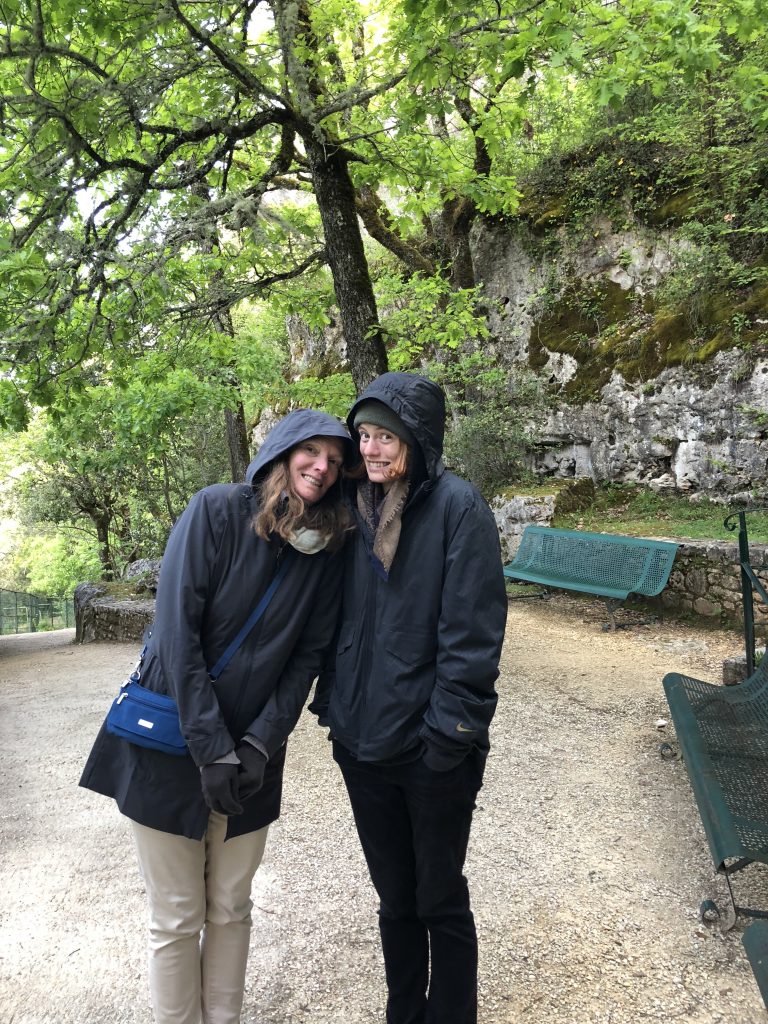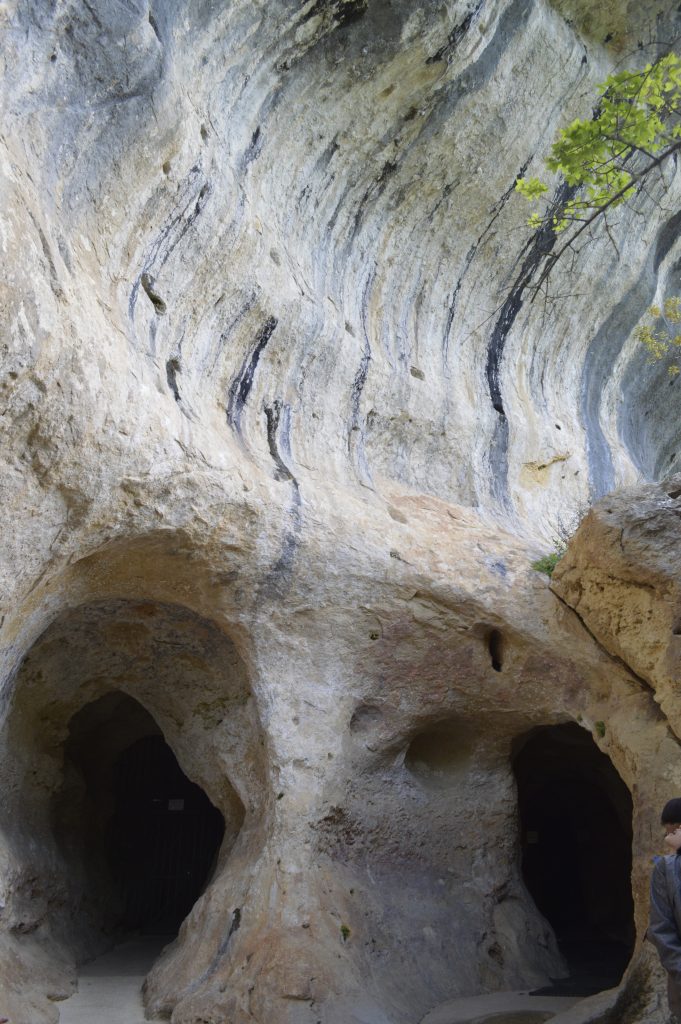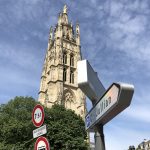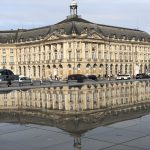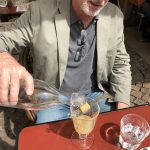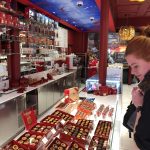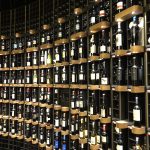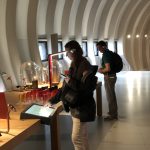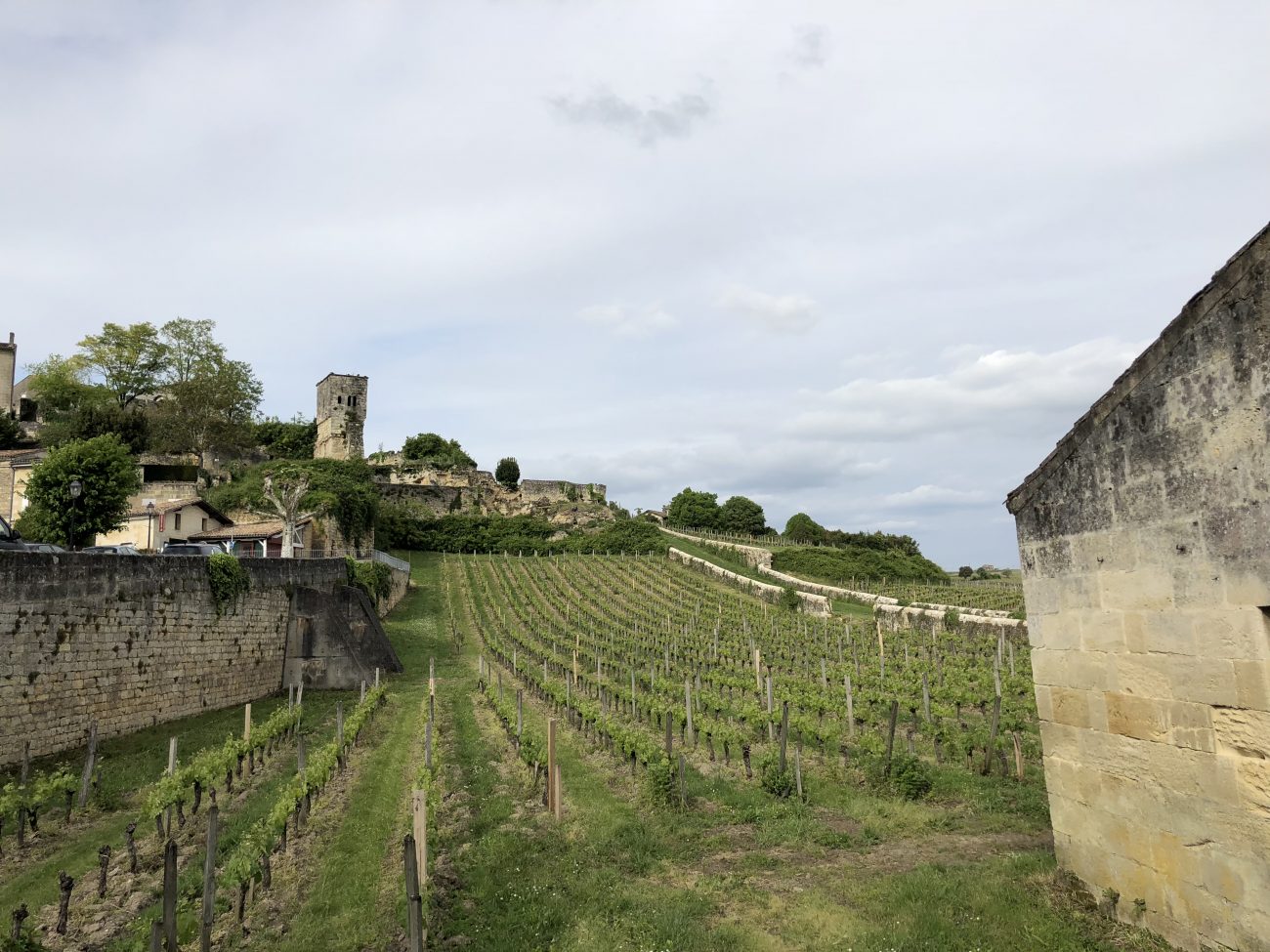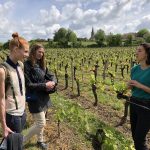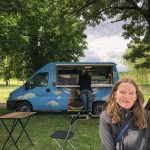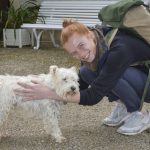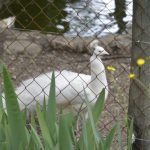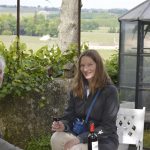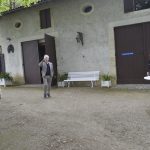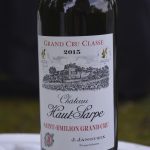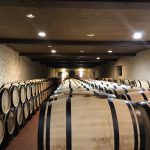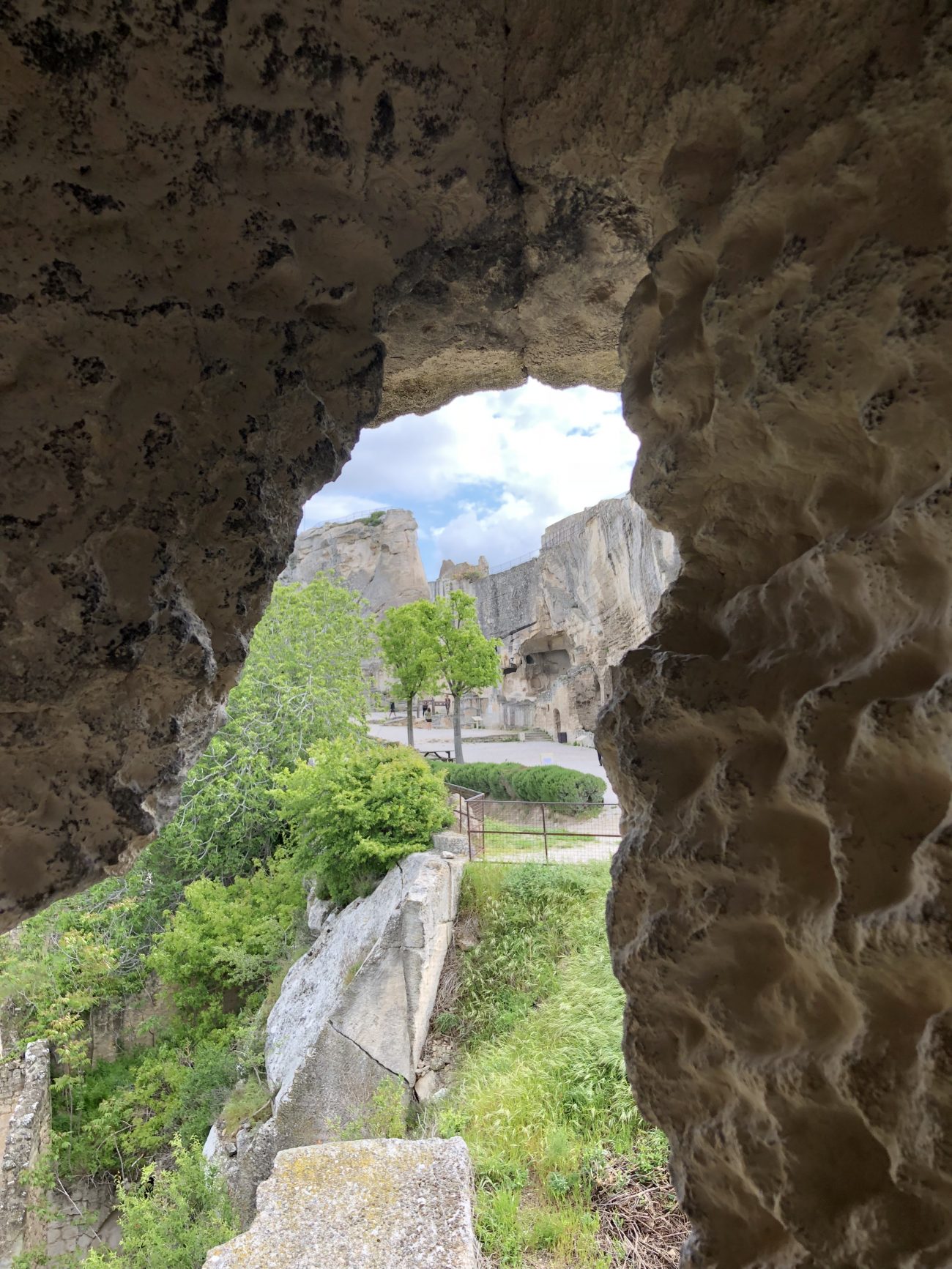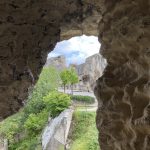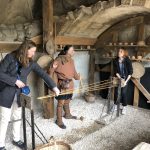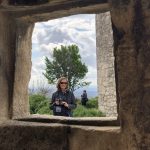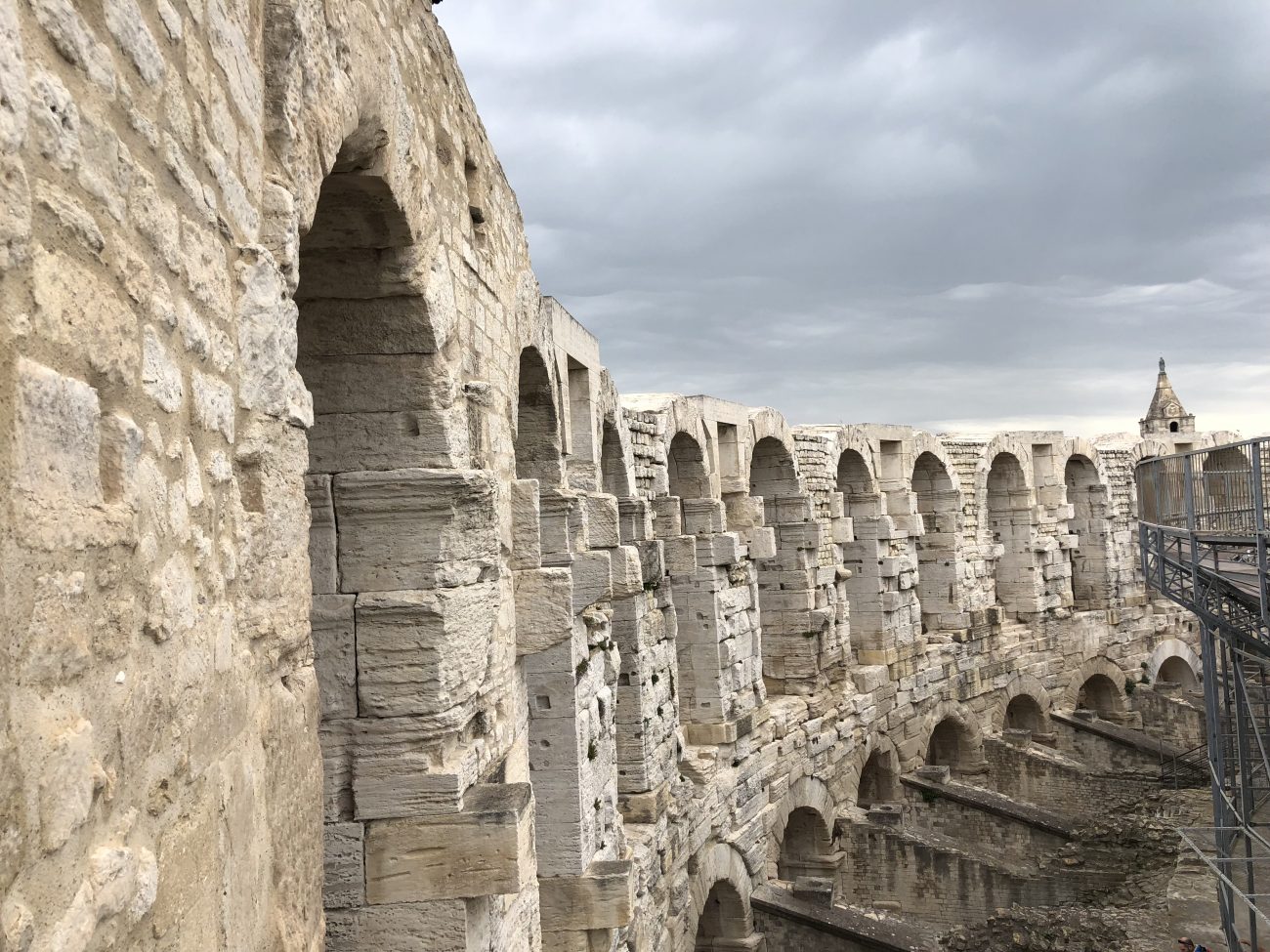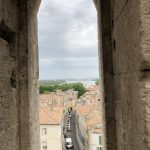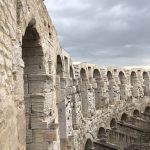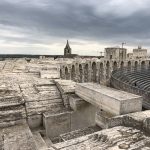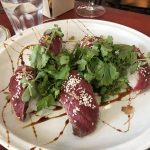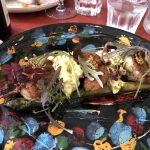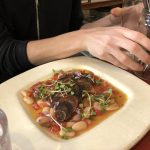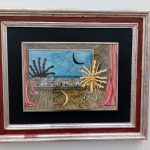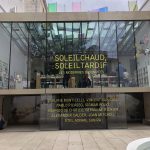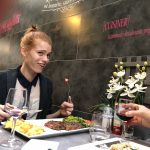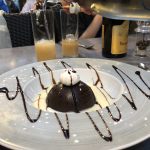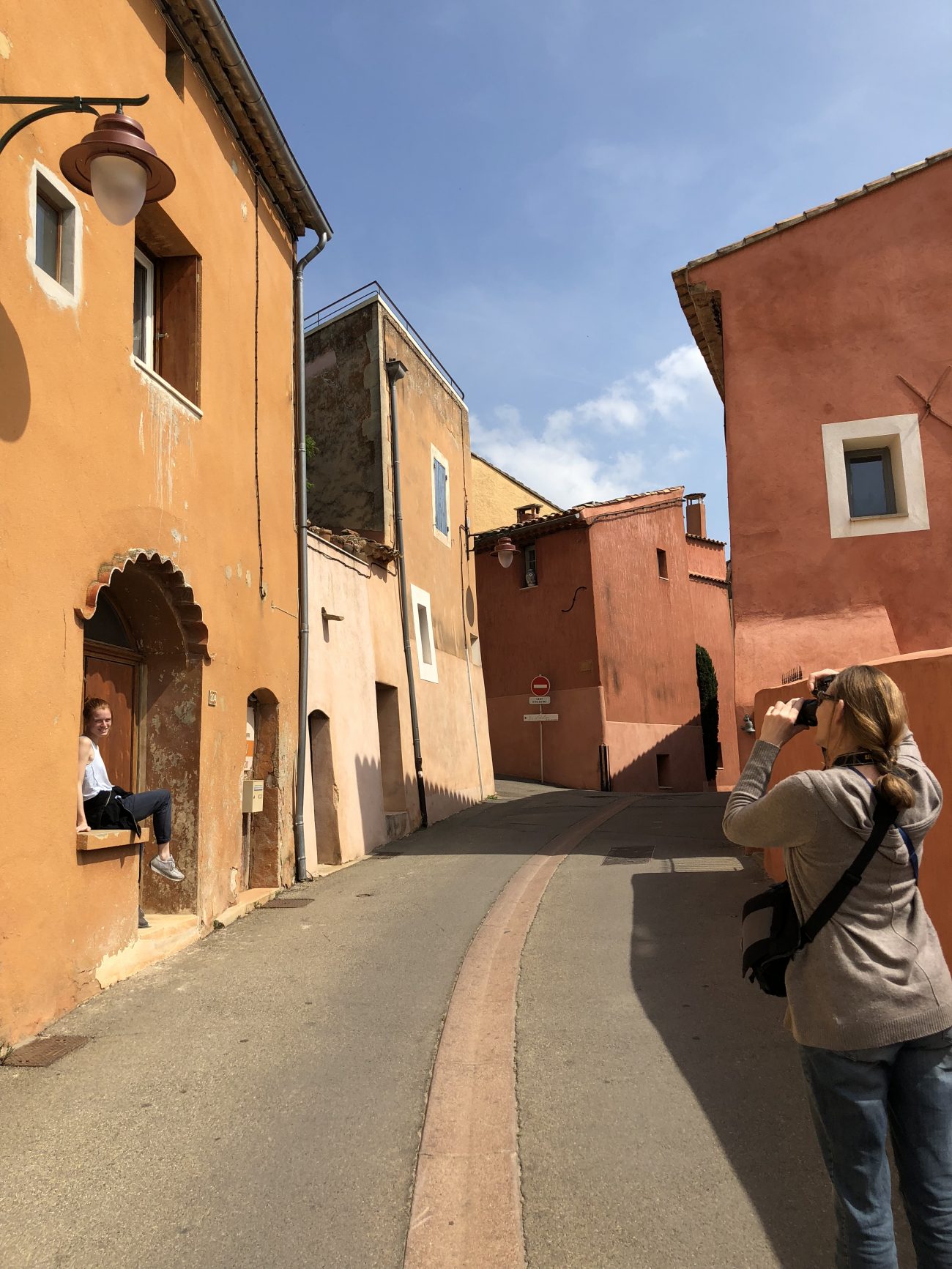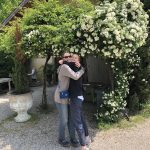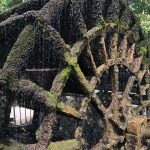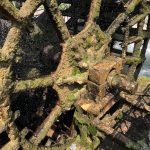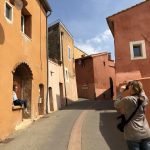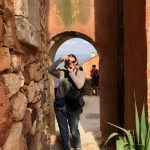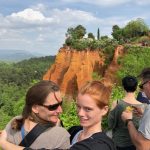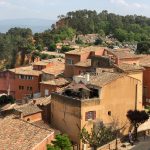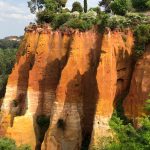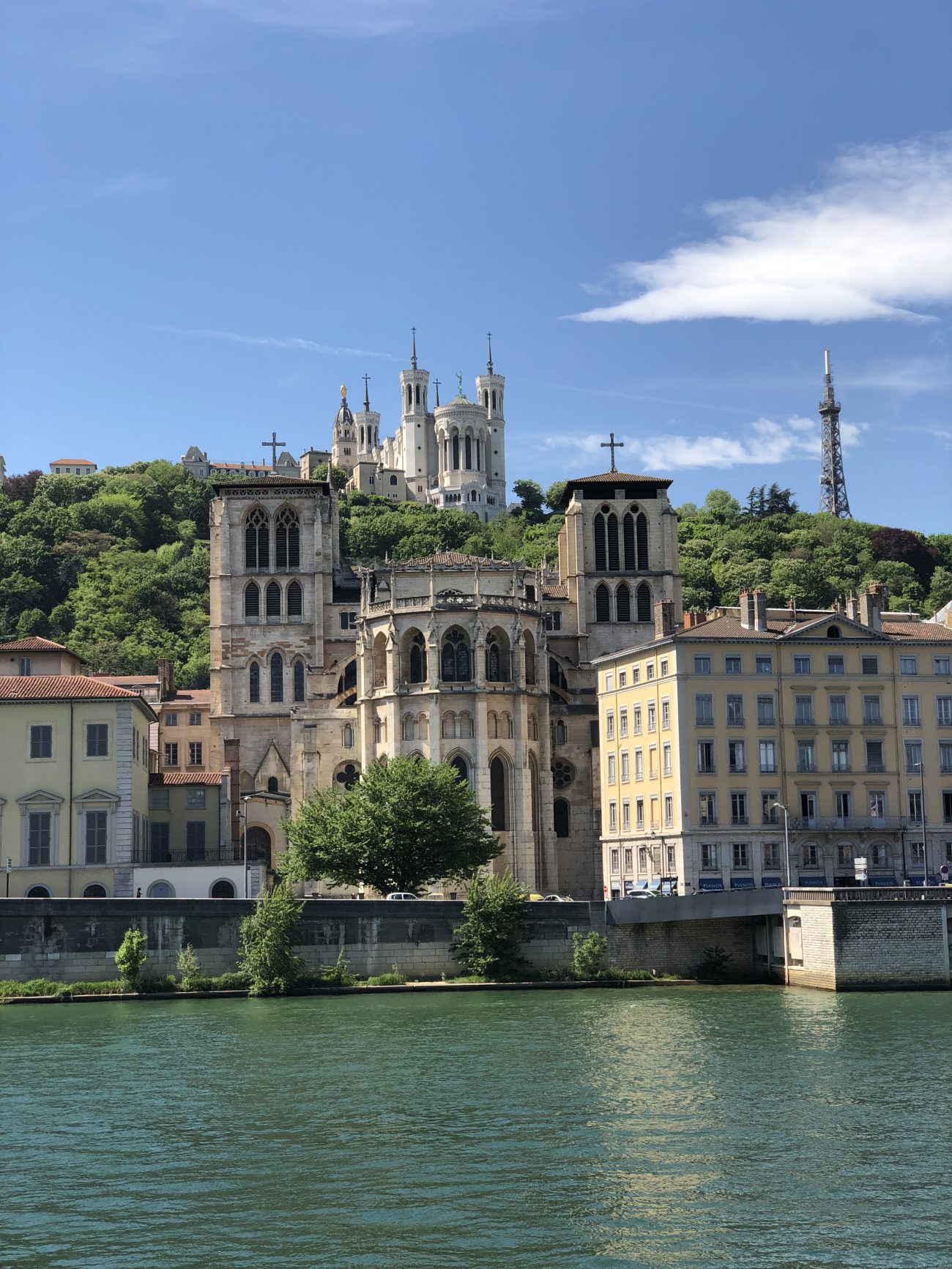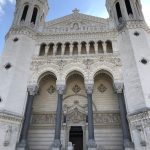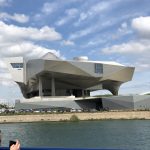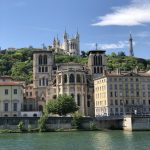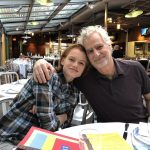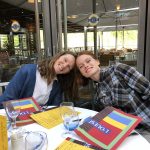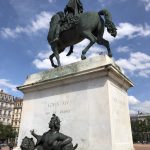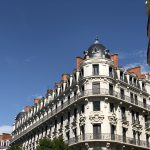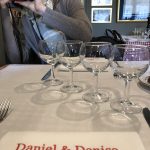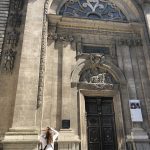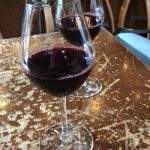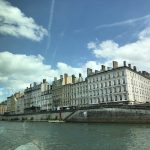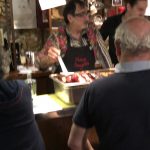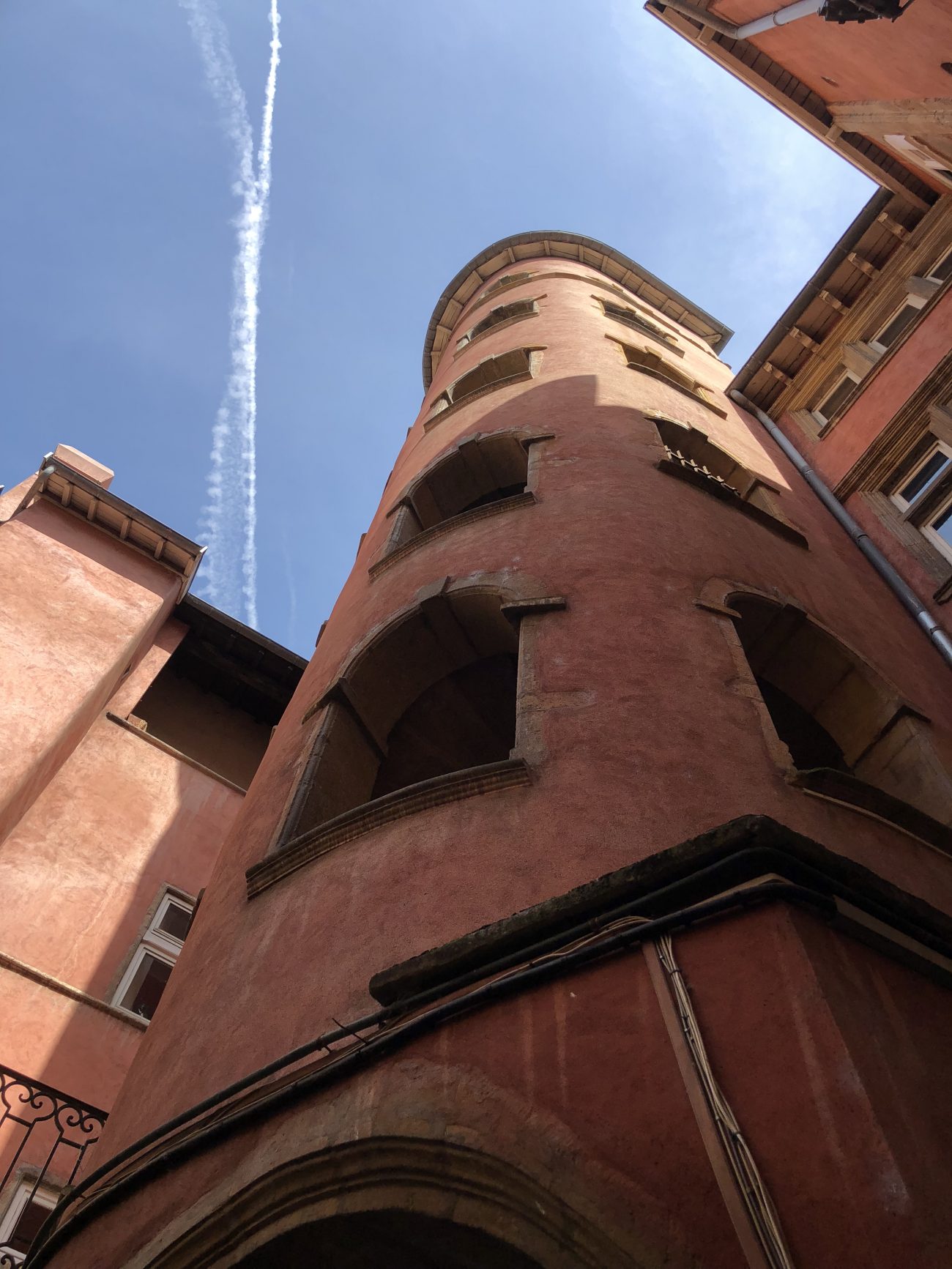Our last five days were in Lyon and we stayed in Cote Jardin, just down the street from our first apartment, but this one was something special. One of the Lyon Renaissance apartments, it was roomy by French standards with two bathrooms, a second floor loft for the bed and bar seating for the kitchenette.
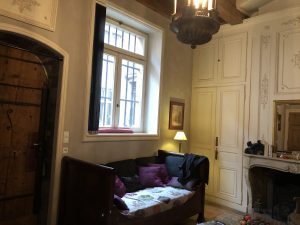
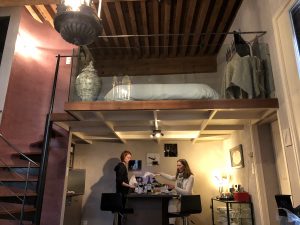
It opened into a courtyard with the 16th century rose tower rising in front of us (usually filled with tourists during the day). Entry was through a traboule on Rue de Boeuf, a small street where 300 silk looms operated in the 18th century. Climbing one set of stairs took us to a small courtyard outside our door where we could enjoy a coffee or glass of wine.
Speaking of the silk trade, Lyon was the last stop on the Silk Road and by 1744, 60,000 of the 100,000 people in Lyon were employed in the silk trade. We learned about this on Saturday when we made our way to the silk museum for a tour and demonstration. If necessary, you can schedule one in English. It’s located in a neighborhood where 40,000 looms once produced fabric. One was still in operation and we saw the process — more than 7,000 silk threads were used to create beautiful fabrics at a pace of about a meter a day. While many of those weavers lost their head in the French Revolution, Napoleon Bonaparte’s thirst for silk revitalized the industry, which continues to thrive today.
A walk through the surrounding neighborhood brought us to a giant fresco, which Phyllicia said was the largest of its kind in Europe.
The weather stayed warm and sunny throughout our stay so a walk across the Rhone to the park and free zoo was in order, topped off by crepes (Phyllicia got the homemade Nutella, Debbie chocolate and me the Grand Marnier).
The days got lazier, the food was spectacular from start to finish, the region’s wines were a delight and we frequented the open market across the Saône to cook a couple dinners and enjoy the Saint-Emilion and Pomerol we brought back with us. We visited Phyllicia at work where she teaches English to Lyon professionals, a site next door to Halles de Lyon-Paul Bocuse, an indoor market where we enjoyed lunch.
The last day was a tour of the Roman amphitheater, built after Lyon became a colony of the Roman Empire called Lugdunum in 47 BCE.
What can you say about Lyon, a beautiful, manageable city that is so close to Provence. We came to visit Phyllicia and though that was the highlight for us, we also fell in love with the city.

We’re not ones for rising early or waiting in lines, but we arrived at Font-de-Gaume at 7 am to secure a morning tour of the polychrome animal drawings estimated to be 15,000 years old and the oldest example you can visit. It helped we were strategically located five minutes away at Hotel Cro-Magnon. Only 78 people are allowed in each day to protect the cave walls.
Unable to take photos and touch the cave walls, we entered the narrow cave and learned quickly it was worth the wait. The link above should give you an idea of what we saw but to be there and imagine these drawings, some showing motion among the bison and horses, was remarkable. And they’re serious about not touching the walls. A Swedish man leaned against the wall and was immediately scolded by our otherwise lovely guide until he acknowledged what had happened.
Following our day in the St. Emilion vineyards, we hopped the train to Bordeaux, a 35-minute ride to the sizable city where Phyllicia led us on a walking tour around some of the sights, including the “mirror” at Place de la Bourse, before we stopped for lunch (and an absinthe) on the sunny afternoon.
We continued on the tram to the La Cite du Vin, the wine museum where we learned everything we need to know about wine making and more before we discovered Phyllicia’s hidden motive in taking us to Bordeaux — the caneles, a sweet treat we purchased at a colorful shop.
We headed back to St. Emilion for a memorable fireside dinner at L’Envers du Decor: delicious oysters followed by a beef dish with Bearnaise sauce, a 2010 Saint Emilion Grand Cru, all topped off with soufflés and a 20-year-old cognac.

What can you say about St. Emilion, the little medieval town located a half hour away from Bordeaux that makes some of the world’s best wine. We knew about the wine, but the scale of the area with easy access to more vineyards than you can handle — and the lack of pretense when you arrive — made me wonder why I ever went to Napa and Sonoma (I guess because they’re closer to home). Wine stores and tasting rooms in town are everyone, but the experience was the next day when we decided to walk down the road about 30 minutes to a few small vineyards. We were in for a surprise, and thanks to Phyllicia for arranging it.

The first winery was La Chateau Saint Christophe, a tiny family owned vineyard in the seventh generation. Xavier, of the sixth generation, greeted us on our walk up and set out four wines, explaining everything we needed to know about the Bordeaux region, benefits of the limestone and clay soil, why 2009 and 2010 were such good years, and much more (though he did say there was no such thing as a good wine, just a good bottle). Being our first stop, I was cautious but walked away with a 1998 Grand Cru.

Next stop was Chateau Coudert where Claire provided a tour, beginning in the vineyard. Claire’s walk through of the process, the blending of Merlot and Cabernet Franc, was a perfect introduction to the tasting, and it was easy to see why 2010 was such a good year — and that was the bottle we purchased. But we didn’t leave then, there was a food truck we had ordered duck and burgers with fois gras and guacamole. That may seem like a strange combination but like everything else here it worked. The 2010 we drank with it didn’t hurt.
And off to the third and final stop, and the biggest surprise, Chateau Haut Sarpe, a sprawling property with a white peacock, plenty of other birds and no one around. That is until Jean-Philippe and his dog met us. He introduced himself as the gardener, though we learned he is much more, and he took us on a tour of the property, where we got to taste a glass of the 2016 Merlot and a glass of the 2016 Cabernet Franc in separate glasses, and then blend them ourselves, as they will do soon to make their Grand Cru. He also let us pull the Merlot from the barrel, quite a treat.
He took us to the tasting room where he opened a bottle of 2015, which he said showed “great promise.” He gave us three glasses and told us to take the bottle and walk around the property. He asked us to leave the bottle on a barrel when we were done and take the glasses with us. And before he left, he called Gary into a barn where there were two French roadsters, 1927 and 1929.
So what do we think of visiting St. Emilion? All the tastings were free, the bottles we purchased were no more than 20 euros, and it was as relaxed as wandering on your grandmother’s farm. More than that, everyone we met was happy, friendly and made us feel at home. And why not, you’re in St. Emilion.
Finally, some insight from our hosts:
- Vines, like us, can last 100 years, and they may produce less, but what they do is very good
- Wine is alive and will do want it wants
- There is no such thing as a good wine, just a good bottle
- Wine does not like to travel much
- When a wine is too young, the flavors don’t blend; they need time to become friends
I read that if you want to go to Le Baux de Provence you need to get there early before the rest of the world shows up, and it was good advice. After walking through the village, we were among the first to enter the Chateau Des Baux de Provence, a thousand-year-old fortress with spectacular views over the Provence countryside.


There was a catapult, ruins of the fortress and even some old fashioned rope making skills for Debbie and Phyllicia.

From there we climbed to the top where there is a view of the Les Baux valley, or Vale of Hell, its white sandstone cliffs getting their name from Dante’s description of Hell in the Divine Comedy, which was inspired by this valley.

As the crowds arrived and the rain began to fall, we escaped for the five-hour drive to St. Emilion where we watched the sunset. Not a bad day.

What to do in one day in Arles with the wind blowing dust in our eyes and rain threatening to pour down at any moment. We started by walking the city and then visiting the Amphitheatre (Arena d’ Arles), built by the Romans circa 90 AD, which held 21,000 people for chariot races, gladiators and more light entertainment.
Phyllicia’s friend Martin, an architect from Nîmes, met us and we walked to lunch, which was, of course, delicious.
The first rain drops came down so we opted for the Van Gogh Foundation exhibit of work by Van Gogh, Picasso, Monticelli, Nash, Chirico and more.
We said farewell to Martin, bought a bottle of wine and hid from the rain before dinner at reservation-only Pergola, where we learned that if you can’t run with the bulls or fight the bulls, you can eat a bull rib and it’s delicious, as is the dome du chocolat and everything else.
Tomorrow we get on the road to Les Baux de Provence, Avignon and then on to St. Emilion.

With Lyon as our home base, we carved out a 6-day tour of Provence and the Bordeaux region. I researched some routes from other blogs, so I’m returning the favor.
We left Lyon early down the A7 to Avignon and headed east for a lazy drive through western Provence to Arles. First stop was L’Isle-sur-la-Sorgue, where the Sorgue River was split into channels to drive water wheels, and now is fueled by what some say are more antiques dealers in the little town – some 300 of them – more than anywhere else in France, except Paris.

From there, we continued through the Luberon mountain to beautiful Fontaine-de-Vaucluse, and Gordes, perched on a hilltop.

And on to Roussillon, a multi-colored village built on ochre, where we spent hours before making our way to Arles before dark.
On our third day in Lyon, we boarded the furnicular to La Basilique Notre Dame de Fourviere, a 19th-century basilica with 4 octagonal towers. From there we had lunch at Daniel & Denise restaurant, a Michelin rated bouchon (Traditional Lyonnaise restaurant) recommended by our taxi driver and it lived up to the recommendation. From there we crossed the Saone and took the one-hour boat north and then south to the confluence of the Saone and Rhone rivers with sightings of the orange cheese, green pencil sharpener and the Confluence Musée. Dinner with Phyllicia was at the Paul Bocuse Brassiere L’Ouest, a massive restaurant with wonderful food.
The next day we strolled the markets for lunch and stopped at the Gadagne Musée, just a few doors down from our apartment in Vieux Lyon. We visited the hidden cafe, a charming 4th floor cafe where we had espresso and chocolate. We crossed the river, seeing the sculpture of a man saving himself, and walked to Bellecour, the largest square (rectangle?) in Europe, and on to the Rhone and the long-renovated Hotel Dieu
, a massive complex with shopping — all integrated in the old buildings. Phyllicia arrived to meet us at the La Cave de Voyageurs for a tasting o
f local wines with charcuterie — if only we had known they were bringing in a freshly roasted pork confit and putting it on the bar.
Tomorrow we’re off to Provence…
The French do go on strike. Landing in Paris, we found Air France workers on strike, forcing us first to deplane down steep stairs, and then rent a car for the five-hour drive to Lyon — train workers also were on strike so there were no high speed trains that make the trip in two hours.
We dropped the car and took a taxi to our apartment in Vieux Lyon, the charming area built in the sixteenth century during the Renaissance. We climbed four flights to our apartment and then headed out for lunch and a walk along the Rhone River to enjoy the sunny, 75-degree day. Phyllicia arrived and we walked to the famous L’Ourson qui boi for a spectacular taste of Lyonnaise cuisine.
We had a quiet second day that began at Cosy Corner, a cafe below our apartment, and explored our immediate neighborhood in Vieux Lyon, strolling through the cobblestone paths and learning a bit about the traboules (walkways) through buildings once used by the silk trade to transport goods and later by the French resistance to elude Nazis. Our trip was just beginning, but we’re in love with Lyon already, its beauty, size, people, wine and of course the cuisine.
